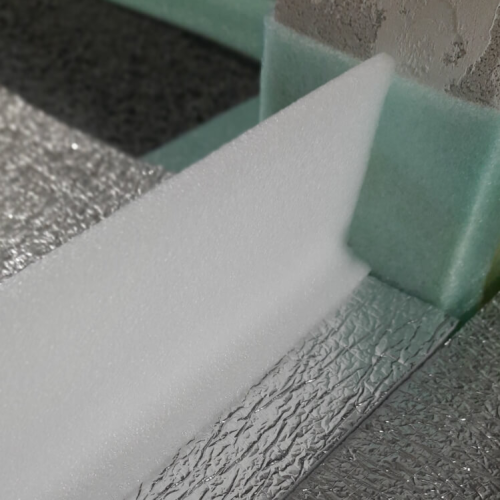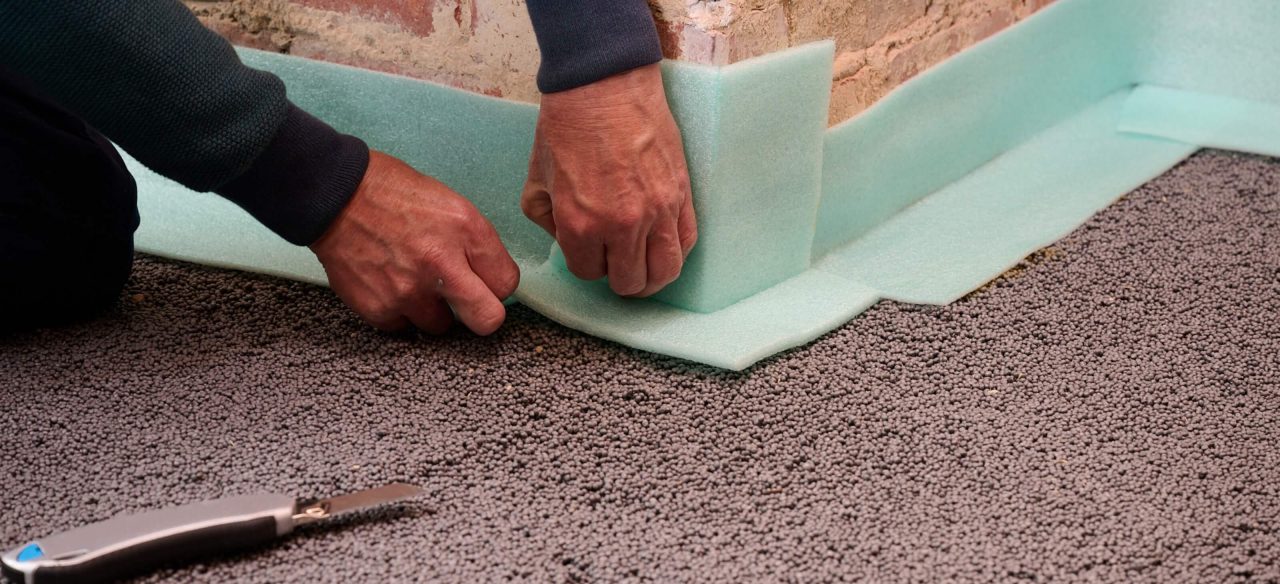
Secure you screed surface
Contact sounds are created by sound vibrations transmitted through structures of a building to other spaces. For example footsteps, objects falling to the ground, or moving chairs.
To reduce the effect of contact sounds, contractors and architects work with a floating screed which is placed on top of an acoustic underlay with side strips. This way, the screed is never in contact with the underlying filling layer and the vibrations are absorbed by the acoustic underlay and side strips.
Expansion joints, better known as dilatation profiles, are used at doorways and stairs and in large screeds to prevent the screed from breaking. The elastic polyethene (PE) foam allows the screed to expand, preventing damage to the screed layer. Even at doorways and stairs, expansion joints, better known as dilatation profiles, are used.
Abriso Jiffy has also designed the Acoustic Foam® Corners. With these interior or exterior PE corners, you can easily avoid gabs and minimalise the risk of your screed touching the underlying filling layer or concrete layer.
Properties:
Easy to install
Smooth and easy to process
Product adapted to your needs:
Used in combination with
Acoustic Foam® Corner, ExplaFlex and ExpaStand are additional products of our range of contact sound insulation products.
They make the installation of our products such as the Acoustic Abrifiber, Acoustic Foam® and Acoustic Reflex®, much easier.
Check out all our acoustic contact sound insulation products.


